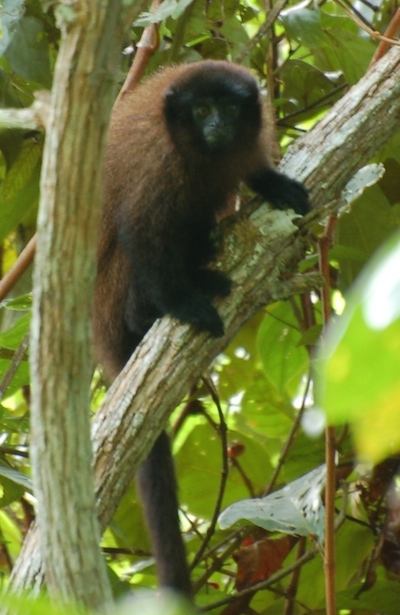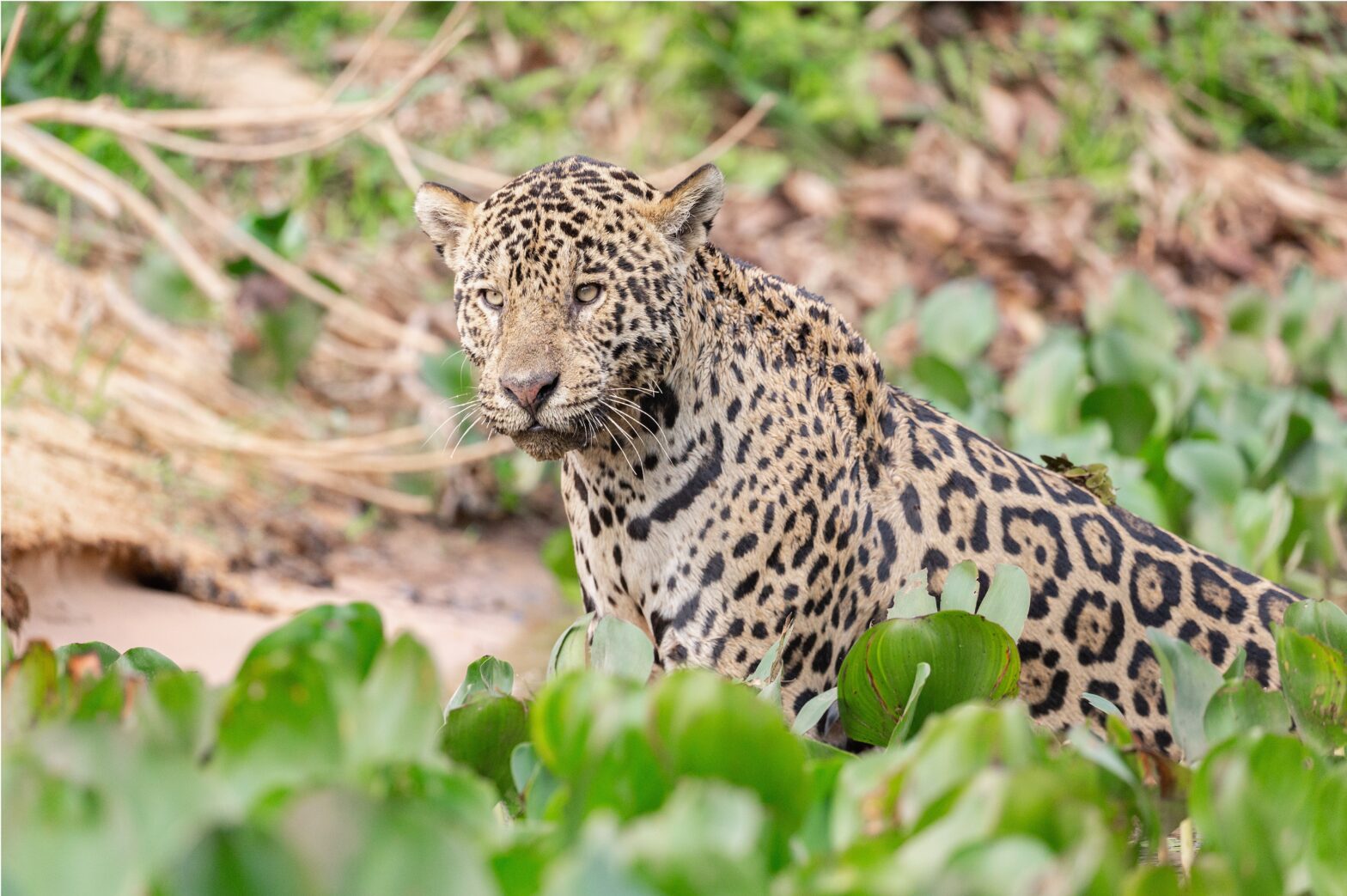Rivers create species. Now, scientists have discovered a new primate that also appears to follow this rule, blocked off from his cousins by a confluence of rivers in the Peruvian Amazon.
Rivers create species. For animals incapable of swimming through or flying over them–like most primates–large rivers can quickly become insurmountable barriers. One of the most famous examples of this evolutionary phenomenon is chimpanzees and bonobos, which are only separated by the Congo River. Now, scientists have discovered a new primate that also appears to follow this rule, blocked off from his cousins by a confluence of rivers in the Peruvian Amazon.
“The many rivers…[have] restricted contact between subpopulations, therefore allowing the development of new species,” Jan Vermeer, the discoverer of the new titi monkey, told Mongabay.
Vermeer and his colleague, Julio C. Tello-Alvarado, recently published a paper describing the new species in Primate Conservation.

The new titi, dubbed Callicebus urubambensis or the Urubamba brown titi monkey, first came to Vermeer’s attention at the American Museum of Natural History. A specimen of the animal, collected in 1927, had been identified as another titi species, Callicebus brunneus. But Vermeer had his doubts about this identification, so he turned where we all do when we want quick answers.
“While early researchers based their research on information in literature and collections in museums, I could made use of a more modern source of information, the Internet,” he said. “The Internet is full with pictures of titi monkey, often posted by tourists that have been somewhere in the jungle and who want to share their experiences with the world. [The Internet is] an unexpected valuable source of information for scientists.”
Looking through Internet photos of titi monkeys, Vermeer found that the titis where the 1927-specimen was found also looked very different from Callicebus brunneus.
“There was only one way to solve the lack of clarity, and that was by making an expedition to the area in Peru where the [American Museum of Natural History] specimens were said to be collected,” he said.
The Expedition
So in 2013, Vermeer and his team with the local NGO, Proyecto Mono Tocón, set off for a six-week expedition to sort out the titi monkey taxonomy in the area. Not only did they discover a new species, but, after finding reddish-colored titis on the western edge of the Urubamba River, they also resurrected one that had been described over a hundred years ago.
“After studying the available literature and specimens in museums, we concluded that these were the so-called Toppin’s titi monkeys (Callicebus toppini),” explained Vermeer.

But finding and documenting the monkeys proved in no way easy. One of the team was hospitalized with malaria, and the team ran into conflict while navigating indigenous territory.
“While some of the indigenous people were very hospitable, others were aggressive and hostile,” said Vermeer. “It was difficult to understand their attitude to outsiders, even for our local guides. Some tribes [seem] to be trapped between their wish for autonomy and their demand for governmental support for education and access to health care (from a government that they do not want to acknowledge!).”
At one point, an angry tribe armed with bows and arrows threatened the expedition, Vermeer said.
He added that “according to our guides it is also possible that some communities are involved in…widespread narcotic activities.”
The government of Peru has long alienated indigenous groups by failing to grant them land rights to their historical lands. Moreover, the Peruvian government continues install infrastructure and launch energy projects without the consent of tribes. Recently, illegal loggers and miners have also invaded indigenous territory. At times, the conflict between the Peruvian government and the indigenous groups inhabiting the Amazon has turned violent.
Despite such challenges, Vermeer’s expedition paid off in the end.
“It was thrilling to finally find the new species that I suspected to exist for many years but for which I need the ultimate proof: observations in the wild,” he said.
Conservation issues
Currently, Vermeer doesn’t believe that the Urubamba brown titi monkey is threatened with extinction.
“The Upper Urubamba region is still largely intact, one of the few places in Peru where there are still populations of the larger primate species as woolly and spider monkeys,” he said, adding that “the new species has probably a relative large distribution range with few human settlements.”
The Urubamba brown titi monkey is also found in Manu National Park, one of Peru’s most famous Amazonian protected areas.

Still, Vermeer noted that “small-scale logging and hunting” could pose a problem for the new species. Moreover, the government is currently pushing oil concessions in the area.
“The Peruvian Government should protect this area, and monitor…the petrol and gas exploration activities in the region,” said Vermeer. “Companies should be forced to take precautions to prevent environmental pollution and they should compensate their impact on nature by effective nature conservation strategies.”
While the habitat of the Urubamba brown titi monkey is not immediately under threat, both illegal gold-mining and rampant logging is rife southeast of the new monkey’s habitat.

A whole lotta titis
Titi monkeys are small, often brightly-colored, fruit-loving primates of South America. Currently scientists have identified 32 species of titi monkeys. This newest paper brings the number up to 34, making titis one of the most species-rich primate genera on the planet. And if recent decades are any indication, it’s unlikely Vermeer’s discovery will be the last new titi monkey added to science.
“Titi monkeys are probably diverse because of their inability to cross certain geographical barriers like rivers, mountain ridges and natural grasslands, possibly due to their small size,” said Vermeer. “Their monogamous social behavior might also play a role.”
To date, the IUCN Red List has evaluated 30 titi monkey species. Of these, ten (33 percent) are considered threatened with extinction, including three listed as Critically Endangered: the blond titi monkey (Callicebus barbarabrownae), the Caquetá titi monkey (Callicebus caquetensis) and the San Martin titi monkey (Callicebus oenanthe). Vermeer’s organization, Proyecto Mono Tocón, is working to save the San Martin titi monkey.
– This report was originally published in Moongabay and is republished by an agreement to share content.





